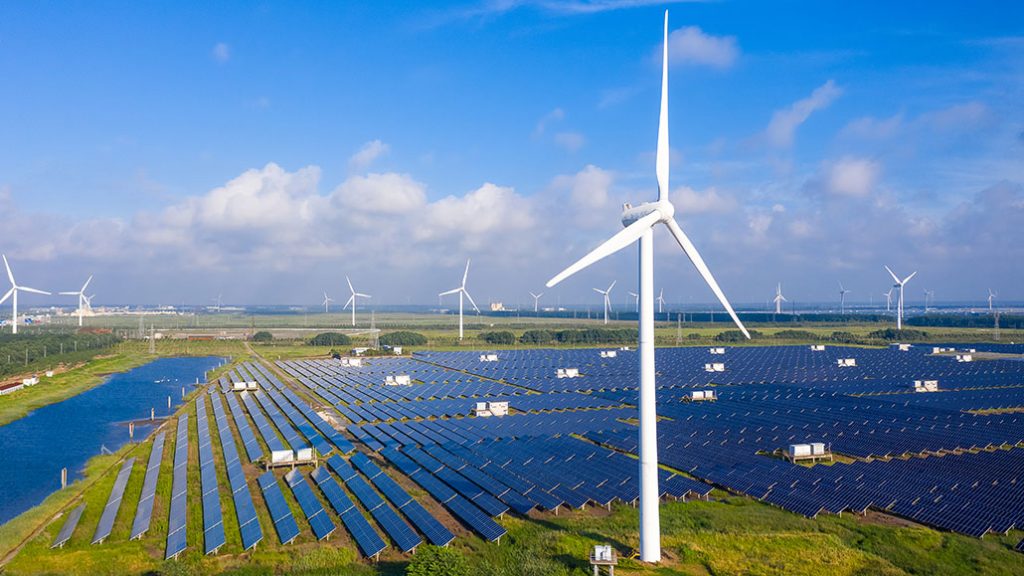Written by: Anas Abdullah
The Necessity for Fossil Fuel Alternatives
Bangladesh mostly relies on fossil fuels for energy generation. Approximately 60% of total electricity is generated from natural gas, while diesel and coal account for 10% and 5%, respectively. These types of fuels are vulnerable to supply shocks, depleting reserves, and environmental issues. Addressing these problems, our government is pursuing an alternative approach: initiating renewable energy sources, such as solar, wind, and hydro power, to generate 40% of the country’s total electricity by 2041. Also including 41 gigawatts of solar generation. The shift to renewable energy will provide a more stable energy supply, reduce greenhouse gas emissions, and contribute to a cleaner and more sustainable future for Bangladesh.
Let us have a look at how the Bangladesh government is approaching promoting the use of renewable energy sources-
Government Renewable Energy Initiatives
Bangladesh is fortunate to have abundant renewable energy resources like solar, wind, hydro, biomass, and biogas, which can meet the country’s increasing energy needs. By 2030, Bangladesh aims to generate 4,190 MW of electricity from these natural sources. Hydro, solar, and wind power are expected to contribute 60%, 39.5%, and 0.5%, respectively, to the total share of 3%.
The undermining table shows the current installed capacity of off-grid and on-grid renewable energy technologies in Bangladesh, including solar, wind, hydro, biogas-to-electricity, and biomass-to-electricity, with a total capacity of 966.48 MW.
| Technology | Off-grid (MW) | On-grid (MW) | Total (MW) |
| Solar | 356.86 | 375.63 | 732.49 |
| Wind | 2 | 0.9 | 2.9 |
| Hydro | 0 | 230 | 230 |
| Biogas to Electricity | 0.69 | 0 | 0.69 |
| Biomass to Electricity | 0.4 | 0 | 0.4 |
| Total | 359.95 | 606.53 | 966.48 |
Now we’ll elaborate on Bangladesh governments initiative in these individual sectors.
Solar Power
Bangladesh has made remarkable progress in expanding its solar power capacity by inaugurating several large-scale solar power plants, including the country’s largest solar power plant in Mymensingh with a capacity of 28 MW and a 50 MW solar power plant in the Feni district. In addition to this, over 6 million solar-home systems have been installed in the country, benefiting more than 18 million people, which is around 11% of the population. The government has also taken initiatives to generate power through rooftop solar panels in government and private buildings and set up 2226 solar irrigation systems across the country. To improve energy access in off-grid areas, the government has introduced a re-financing scheme to support alternative energy generation projects like small-scale solar and micro-grids. Moreover, the National Solar Energy Roadmap for 2021-2041 has been drafted to frame a long-term vision for the nation and set possible capacity targets for the country’s solar energy initiative, demonstrating Bangladesh’s commitment to a sustainable and green energy future.
Wind power
Bangladesh has made remarkable progress in the field of wind power by implementing several wind power projects, including off-grid and on-grid systems. Completed wind power projects include a 0.9 MW grid-connected wind turbine power plant in Feni, two 1 MW capacity wind battery hybrid power plants in Kutubdia Upazila, and a 2 MW capacity wind power plant under implementation at the bank of the River Jamuna. In addition, the government signed an agreement with a Chinese company to set up a 100 MW wind power plant in Cox’s Bazar. Several wind power projects are also under planning, including the Matarbari 100 MW Wind Power Plant Project and the Mongla 55 MW Wind Power Plant. These initiatives are expected to contribute significantly to Bangladesh’s goal of producing 4190 MW of electricity from renewable resources by 2030.
Hydropower
Located in Rangamati, Bangladesh, the Kaptai Hydro Power Plant has a remarkable capacity of 230 MWp. As a significant hydroelectric power plant, it is linked to the national grid and has been a reliable source of electricity for the region since its completion in 1988. The plant is wholly operated by the Bangladesh Power Development Board (BPDB) and has contributed significantly to the economic and social growth of the area.
Biogas to Electricity
Bangladesh has several biogas-to-electricity projects, including Oasis Services (Agro) Ltd with a 300 kW capacity, completed in 2020. Other off-grid projects include Phenix Agro Ltd., UAL Bio-Electricity Project, KKT Bio-Electricity Project, ZPL Bio-Electricity Project, UKAL Bio-Electricity Project, Seed Bangla Foundation Bio-Electricity Project, RKKL Bio-Electricity Project, and Dutch Dairy Ltd. Two on-grid projects, Narayanganj 6 MW Power Plant and 42.5 MW Municipal Solid Waste based Power Plant, are currently in the planning stage. Additionally, there is a 1 MW grid-connected power plant based on municipal solid waste under a pilot project at Keraniganj.
Biomass to Electricity
The SEAL Biomass-based Electricity Project in Thakurgaon, Bangladesh is a 400 kW off-grid project that uses biomass to generate electricity. Completed in 2015 and supported by IDCOL, the project has been contributing to the local economy while promoting sustainable development. This initiative exemplifies Bangladesh’s growing commitment to increasing its renewable energy capacity.
Conclusion
Despite progress in renewable energy development, Bangladesh faces several challenges in expanding its renewable energy sector. These include a lack of skilled manpower, limited financing options, and the high upfront costs of renewable energy projects. Additionally, the country’s reliance on fossil fuels remains a major obstacle to achieving its renewable energy targets.
References
- Taheruzzaman, M. & Janik, P. (2016). Electricity Access in Bangladesh. Retrieved from: https://www.researchgate.net/publication/306047475_Electric_Energy_Access_in_Bangladesh
- https://unfccc.int/sites/default/files/NDC/2022-06/NDC_submission_20210826revised.pdf
- Sluggish growth of renewables threatens Bangladesh’s clean-energy goals – Mongabay News
- https://www.sciencedirect.com/science/article/pii/S1876610219313104_Renewable energy in Bangladesh: Status and prospects
- https://ndre.sreda.gov.bd/index.php?id=1&i=11
- https://www.tbsnews.net/bangladesh/energy/imported-lng-be-24-times-more-expensive-local-gas-cpd-370075
Featured Image Courtesy: Jia Yu
